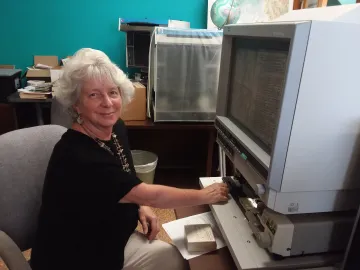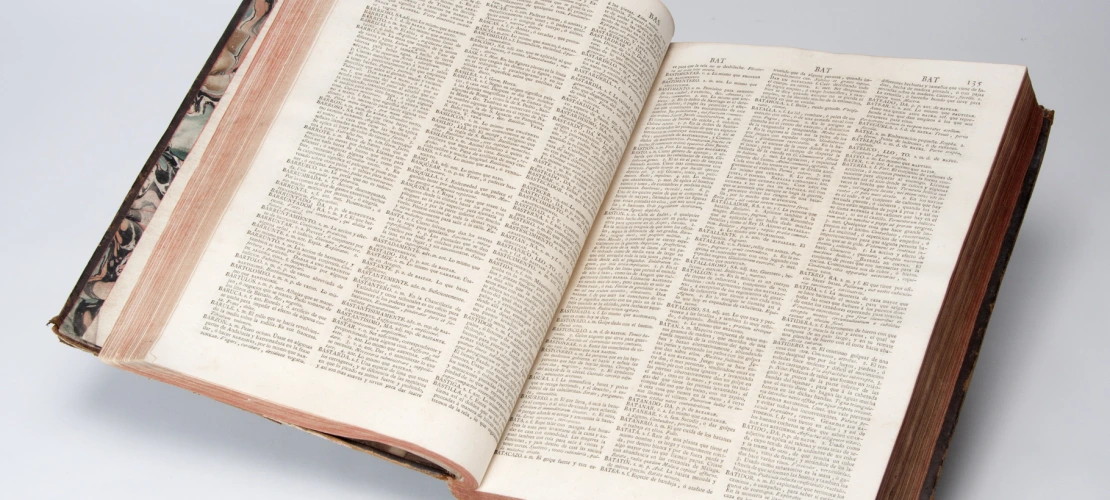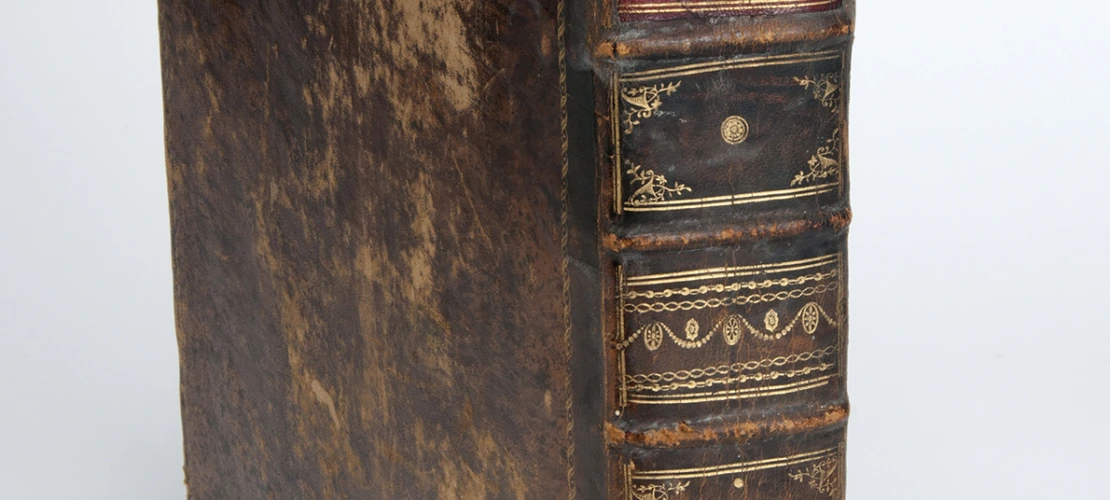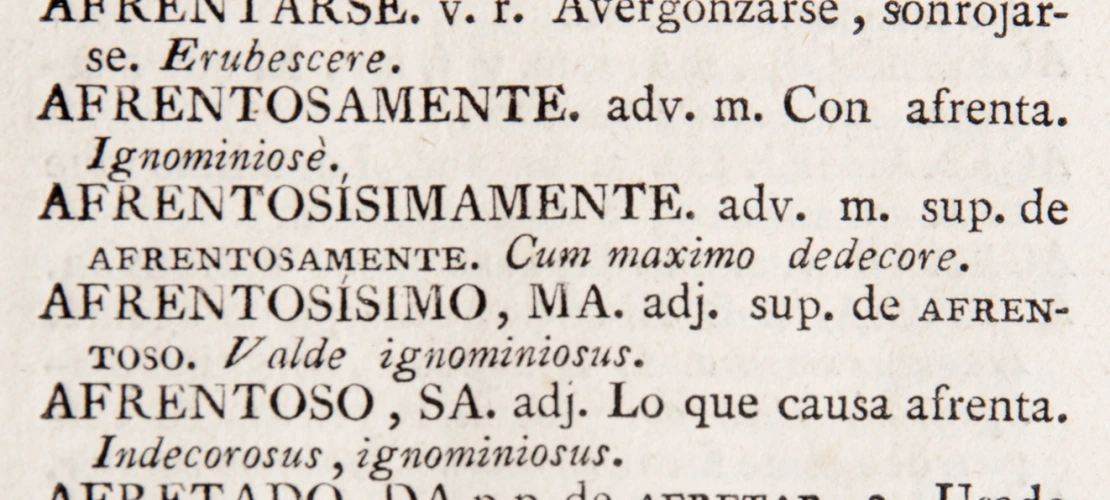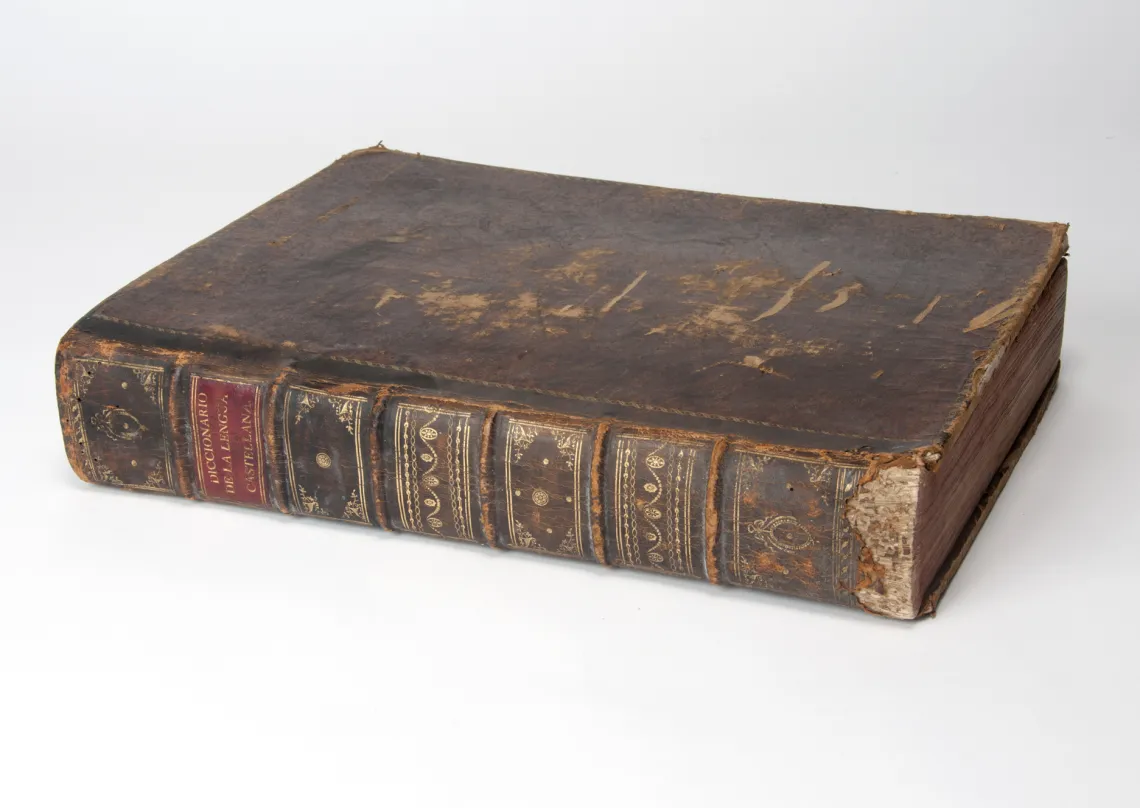
Diccionario de la Lengua Castellana, 3rd edition
Published in 1791
Madrid, Spain
Cover: sheepskin leather, Pages: cotton rag
Length: 14.37 in. (36.5 cm.), Width: 10.5 in. (26.7 cm.),
Thickness: 2.87 in. (7.3 cm.)
On long-term loan from the Jesuit Historical Institute
The Academy published its first dictionary, the Diccionario de Autoridades, in six volumes beginning with A–B in 1726 and ending with S–Z in 1739. It consolidated this set into the single-volume Diccionario de la Lengua Castellana in 1780, printing a second edition in 1783 and a third in 1791. The dictionary has been periodically updated over the years, with its most recent edition—the twenty-first—printed in 1992. All of these editions may be consulted online using the Nuevo Tesoro lexicográfico de la lengua española on the Real Academía Española website.
As an ethnohistorian who reads and translates Spanish colonial documents, I find this rare edition of the Diccionario de la Lengua Castellana interesting for what it represents: an important milestone in the development of a national Spanish language.
In recent years the Academy has moved beyond its nationalistic preoccupation, collaborating with 21 sister organizations in Latin America and other countries where Spanish is spoken to produce a massive new grammar (3 volumes) documenting the richness of the language in all its forms. Included is a linguistic map showing how Spanish grammar and pronunciation vary from region to region. This is a noteworthy change for the Academy, which previously did not acknowledge grammar rules in countries other than Spain.
Diccionario de la Lengua Castellana, 3rd edition
Published in 1791
Madrid, Spain
Cover: sheepskin leather, Pages: cotton rag
Length: 14.37 in. (36.5 cm.), Width: 10.5 in. (26.7 cm.),
Thickness: 2.87 in. (7.3 cm.)
On long-term loan from the Jesuit Historical Institute
Link
Real Academía Española website
Reference
Crow, John A.
- 1985 Spain, the Root and the Flower: An Interpretation of Spain and the Spanish People. 3rd ed. University of California Press, Berkeley.






